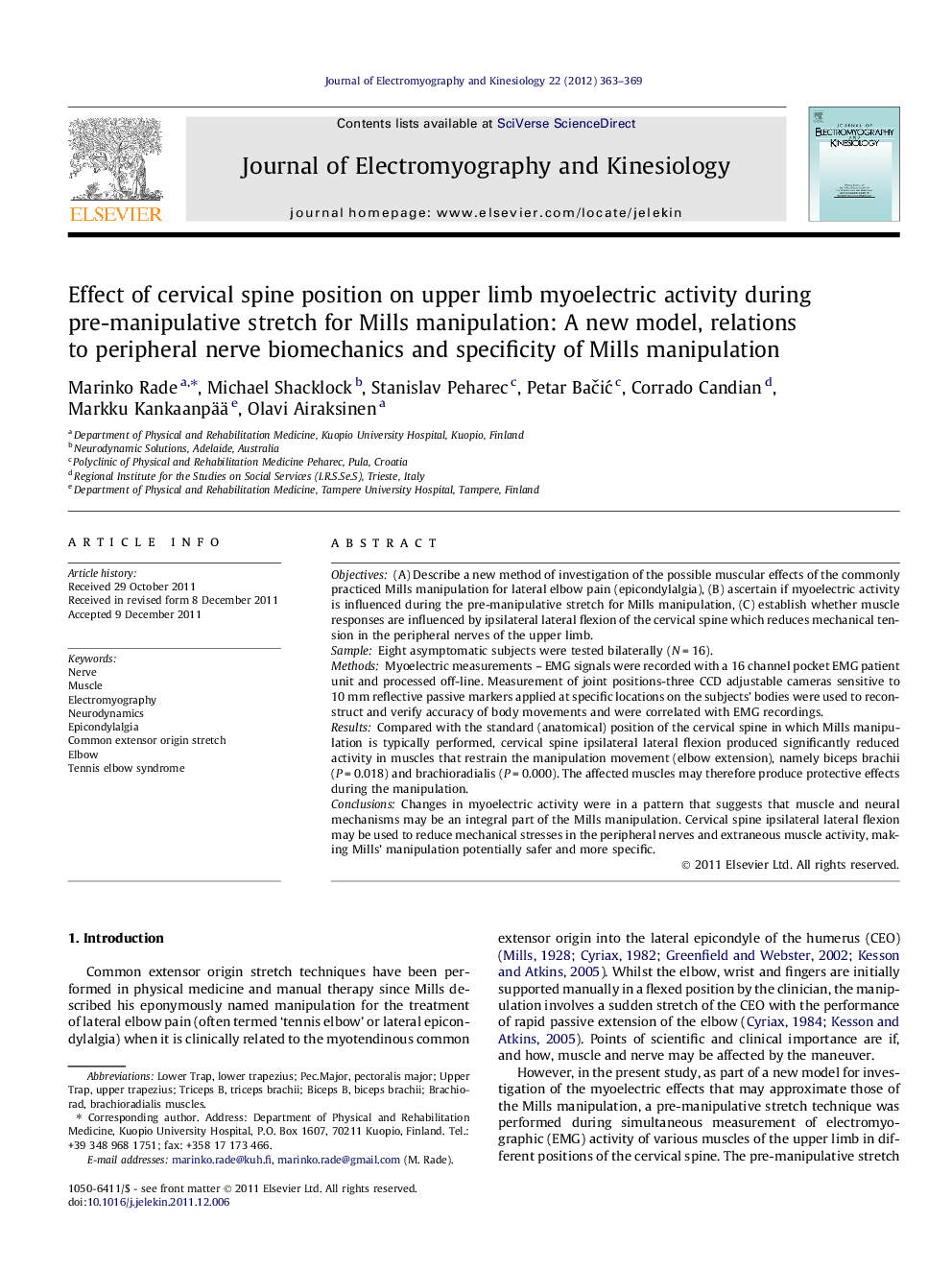| کد مقاله | کد نشریه | سال انتشار | مقاله انگلیسی | نسخه تمام متن |
|---|---|---|---|---|
| 6210632 | 1266234 | 2012 | 7 صفحه PDF | دانلود رایگان |

Objectives(A) Describe a new method of investigation of the possible muscular effects of the commonly practiced Mills manipulation for lateral elbow pain (epicondylalgia), (B) ascertain if myoelectric activity is influenced during the pre-manipulative stretch for Mills manipulation, (C) establish whether muscle responses are influenced by ipsilateral lateral flexion of the cervical spine which reduces mechanical tension in the peripheral nerves of the upper limb.SampleEight asymptomatic subjects were tested bilaterally (NÂ =Â 16).MethodsMyoelectric measurements - EMG signals were recorded with a 16 channel pocket EMG patient unit and processed off-line. Measurement of joint positions-three CCD adjustable cameras sensitive to 10Â mm reflective passive markers applied at specific locations on the subjects' bodies were used to reconstruct and verify accuracy of body movements and were correlated with EMG recordings.ResultsCompared with the standard (anatomical) position of the cervical spine in which Mills manipulation is typically performed, cervical spine ipsilateral lateral flexion produced significantly reduced activity in muscles that restrain the manipulation movement (elbow extension), namely biceps brachii (PÂ =Â 0.018) and brachioradialis (PÂ =Â 0.000). The affected muscles may therefore produce protective effects during the manipulation.ConclusionsChanges in myoelectric activity were in a pattern that suggests that muscle and neural mechanisms may be an integral part of the Mills manipulation. Cervical spine ipsilateral lateral flexion may be used to reduce mechanical stresses in the peripheral nerves and extraneous muscle activity, making Mills' manipulation potentially safer and more specific.
Journal: Journal of Electromyography and Kinesiology - Volume 22, Issue 3, June 2012, Pages 363-369